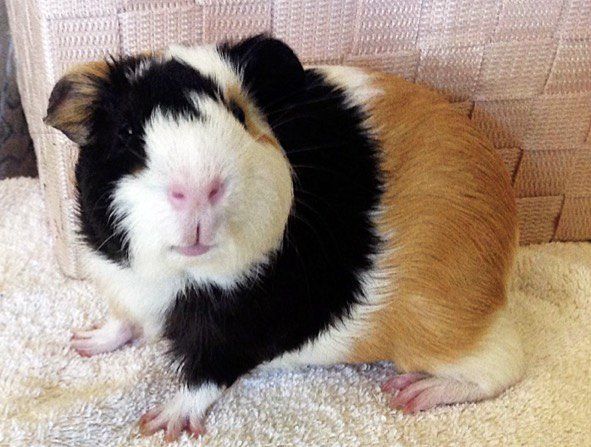(Don’t) Think Like a Guinea Pig

Kevin Tutty, Licensed Practical Counselor
At our house, we have become proud guinea pig owners. I would have never guessed, but over the past year, Patches has truly become “one of the family.” Observing his character traits have been interesting to me. He is a very careful little guy. While he trusts us, he’s rarely at ease. Even the slightest disturbance can put him on “high alert,” causing him to chatter a great deal!
This heightened state of awareness is where he seems to be much of the time. It is almost like he is in a “fight or flight” mode as a default. For guinea pigs, it seems, predators can come out of nowhere! When you are near the bottom of the food-chain, what are you supposed to do? He has to rely on instinct a lot, and instinct is what drives his actions much of the time.
Since guinea pigs don’t have a highly developed frontal lobe in their brain like we do, Patches is less able to identify situations that don’t involve immediate danger. It is if he stays in this “fight of flight” default mode, regardless of whether he is in the safety of our home, or out in the wild. This was demonstrated the other day when he got under our china cabinet, and did not want to come out. I heard primal screams coming from him as we attempted to retrieve him. It wasn’t until I was able to move the china cabinet from the wall and coax him out with a stick of celery, that he came out peacefully!
The same situation can happen to us. When we become agitated or anxious, our brain can go into “fight or flight” (or freeze) mode. The part of our brain driving our impulses directs us to flee the situation or fight whoever we think is attacking us. It does not easily recognize the threat isn’t a dangerous or life-threatening situation. The fight/flight/freeze response can be stuck in overdrive after we experience a trauma or just an ongoing series of stressful events.
When this default mode is triggered, we can sometimes bring ourselves out of this situation (if not triggered by a highly traumatic event) by getting the frontal lobe of our brain to start working instead of the “fight or flight” area. Deep breathing and thought-stopping techniques work well much of the time for day-to-day anxiety or frustrating situations.
Self-care is another great way to reduce anxiety and agitation, so that you’re not hovering right under the “fight or flight” threshold all the time (much like our guinea pig). I think one of the best self-care methods is exercise. Going for a run helps me to reset my thoughts and clear my mind like no other activity. Getting enough sleep, eating properly and managing stress levels are other important considerations.
Just remember, we don’t have to be ruled by our instincts like our guinea pig friends! Therapists here at TLCC can help guide you through this process if you’re having trouble and find these interventions aren’t enough to help alleviate symptoms of anxiety.






